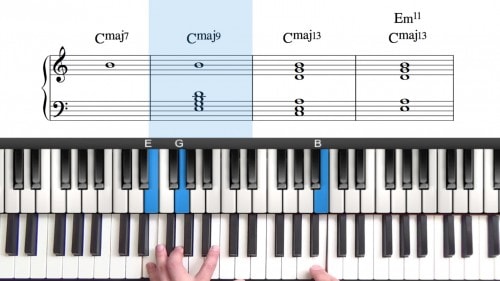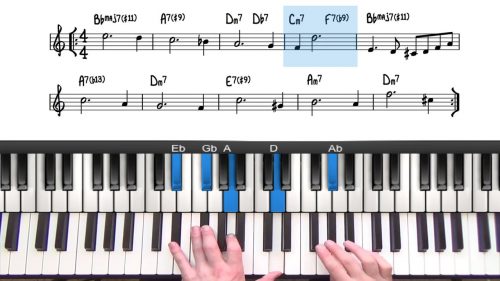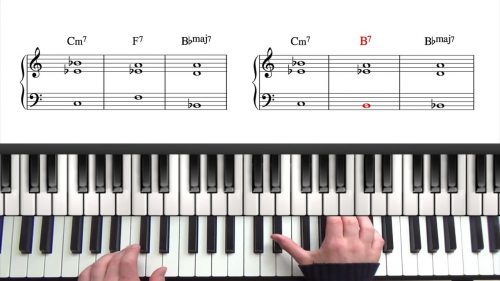C Major Chord Progressions
In this lesson we explore the most common chord progressions in C Major including the 251 and the 36251. We start with the most basic 3-note voicings and then incorporate chord extensions and alterations to create a richer more sophisticated sound.
Extending the 251 Progression
We add the 6 chord into the 251 progression to create a cyclical 2516 progression. This can then be extended further to create the 35261 progression which utilises most of the diatonic 7th chords in the key of C Major.
Tritone Subs & Passing Chords
We finish by applying tritone substitution and passing chords to create more interesting harmonic pathways. The tritone relationship is a very useful device to unlock different chord colours and textures, particularly over dominant chords.
Lesson Downloads
-
Extended & Altered Progressions File Type: pdf
-
251 Voice Leading Options File Type: pdf
-
Starting Positions on ii-7 Chord File Type: pdf
-
The 2516 Progression File Type: pdf
-
The 36251 Progression File Type: pdf
-
Tritone Subs & Passing Chords File Type: pdf
Practice Tips
-
Ensure that you are comfortable with the 3-note voicings and that you can clearly visualise the voice leading of 7ths falling to 3rds.
-
Try to visualise the alteration voice leading on the dominant chords. Usually the altered tones will sit a half step above or below the tones of the ii-7 chord.
-
Experiment with alteration voice leading in the centre of the voicing and also at the top so that the altered tone is the melody note.
- Practice single alterations, double alterations, and upper structure triads.








Am I missing something, or are the first 2 progressions and voicings (vanilla and half step melody movement) on the 36251 download exactly the same?
Hi Wendy 👋
Yes you are correct that they are exactly the same. In the second example you will see that I highlighted the top note in red to clearly show that it descends in half steps.
It’s important to understand that we can usually create these kind of chromatic lines when moving between chords in 251, 2516, 36251, and other common progressions.
As an exercise, keep those melody notes on top and instead play E-9 –> Eb9 –> D-9 –> Db69 –> C69 and try to find the voicings yourself.
Being able to quickly visualise voicings shapes with a given melody note on top is an important skill and that is one of the main improvements you will see from taking this course.
I hope that helps.
Cheers,
Hayden
this video seems to be missing the speed control option. not sure if that is something that can be added in.
thanks, james
Thanks for letting me know about this James – I have just added the speed controls and A/B Loop.
It’s a small setting in the admin interface which is easy to miss when I am adding new lessons. If you spot it anywhere else just let me know and I will fix it.
Enjoy the lesson.
Cheers,
Hayden
ps. the next module for this course is on my to-do-list. It will be the exact same progressions but in the key of G Major and we will apply to the tunes “How High The Moon” and “But Beautiful”.
Wow!! that was fast!! thanks Hayden!
At 14 minutes, the bass switches from A to G; is that correct?